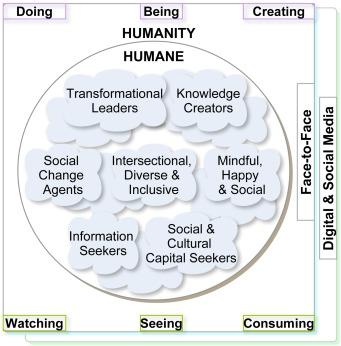Maximizing Parental Involvement in Remote Learning: Strategies for Success
Introduction
The shift to remote learning, accelerated by recent global events, has revolutionized how students, teachers, and parents engage with education. As digital classrooms become more prevalent, the role of parental involvement in remote learning has proven to be a critical factor in student achievement and well-being. Though, supporting children’s educational journey from home requires intentional strategies and adaptable routines. This comprehensive guide explores proven methods and practical tips to help families maximize parental involvement in remote learning, setting the stage for student success.
Why Parental Involvement in Remote Learning Matters
Research consistently shows that active parental engagement enhances students’ academic performance, motivation, and emotional resilience. In virtual classrooms, the physical absence of teachers and peers means parents often serve as critical liaisons, providing structure, encouragement, and monitoring progress.
- Improved Academic Performance: Children perform better when parents are informed and engaged in the learning process.
- Increased Motivation: Parental support helps children stay focused, accountable, and enthusiastic about their studies.
- Emotional Support: Navigating remote learning challenges is easier for children who feel supported at home.
- Better Communication: Parents help bridge the gap between teachers and students, ensuring smoother facts flow and problem-solving.
key Strategies to Enhance Parental Involvement in Remote Learning
1. Create an Effective Learning Environment
- Dedicated Space: designate a quiet, well-lit area for learning, free from distractions like TV or noisy siblings.
- Organizational Tools: Use calendars or digital planners to track assignments and deadlines.
- Resource Readiness: Ensure access to necessary technology, educational apps, and materials such as notepads, pencils, and textbooks.
2. Establish a Consistent Routine
- set regular wake-up and bedtimes to maintain healthy sleep cycles.
- Schedule breaks for meals, play, and relaxation to prevent burnout.
- review each day’s schedule together each morning, reinforcing structure and expectations.
3. Communicate Frequently with Teachers
- Attend virtual parent-teacher conferences and participate in school webinars.
- Keep open lines of communication via email, learning management platforms, or school apps.
- Ask for feedback about your child’s progress and areas for improvement.
“staying in the loop with teachers gives parents clarity on how to best support their child at home.” — Remote Learning Specialist
4. Get Involved in Learning activities
- Help with assignments or explore learning resources together.
- Encourage curiosity by linking learning topics to real-life experiences.
- Celebrate milestones such as completed projects or improved grades.
5. Foster Independence and Obligation
- Gradually encourage children to manage their own tasks and schedules.
- Provide guidance and step back as they become more confident in their abilities.
- Teach self-advocacy—help children ask teachers for clarification or additional resources when needed.
Practical Tips for Busy Parents
- Leverage Technology: utilize parental controls and productivity apps to minimize distractions (e.g., Forest, Cold Turkey) and stay organized.
- Set realistic Expectations: Recognize that not every day will go perfectly—adaptability is key.
- Model Lifelong Learning: Show your own interest in learning by reading, exploring new skills, or discussing current events with your child.
- Prioritize Mental Health: Watch for signs of stress and take time for family wellness activities outside of school hours.
- Share Responsibilities: Engage other family members in the process, distributing tasks and emotional support.
Real-World Examples of Effective parental Involvement
Case Study: The Johnson Family’s Remote Learning Success
When schools closed, the Johnsons were initially overwhelmed. By designating a shared workspace, establishing a daily routine, and making time for regular check-ins with teachers, they soon found a rhythm. Both parents took turns assisting with assignments based on their schedules. Their proactive communication with teachers meant they could quickly address challenges, and their daughter thrived academically.
First-hand Experience: parent Perspective
“Supporting my two sons during online classes wasn’t easy at first, but setting up a daily routine and open dialog made a world of difference. The boys became more self-reliant, and I felt more connected to their learning than ever before.” — Carla, parent of 8-year-old twins.
Benefits of Strong parental Engagement in Remote Learning
- Improved Grades and Test Scores: Consistently engaged parents see higher academic outcomes for their children.
- Enhanced Emotional Well-being: Children feel more supported and less anxious during periods of social or educational upheaval.
- Better Digital Literacy: Parents increase their own tech skills while guiding kids through platforms and resources.
- Family Bonding: participating in learning activities together strengthens the parent-child relationship.
- Preparation for Future Learning: Habits built during remote learning set the foundation for high school, college, or lifelong independent study.
Common Challenges and How to Overcome Them
- Time Constraints: Parents juggling work-from-home responsibilities can prioritize by scheduling short, focused daily check-ins with their kids.
- lack of Tech Skills: Take advantage of school-offered training or tutorials to become more pleasant with digital learning platforms.
- Motivation Slumps: Keep engagement high with goal-setting, positive reinforcement, and fun learning activities.
- Screen Fatigue: Balance screen time with offline breaks, outdoor play, or creative pursuits.
conclusion
Maximizing parental involvement in remote learning is essential for children’s academic success and overall well-being in today’s digital education era.By creating supportive environments, establishing routines, maintaining open communication with teachers, fostering independence, and offering emotional support, parents can profoundly impact their child’s remote learning experience. With practical strategies and ongoing commitment, families can transform remote learning challenges into opportunities for growth, resilience, and lifelong connection.
Remember, every family’s journey is unique. Start with the strategies that fit your needs and don’t hesitate to seek support from schools, online communities, or fellow parents.With intentional involvement, your child can not only succeed in remote learning but thrive.

